|
|
Photoelectrochemical Properties of MoSe2 Modified TiO2 Nanotube Arrays
ZHANG Ya-Ping, DING Wen-Ming, ZHU Hai-Feng, HUANG Cheng-Xing, YU Lian-Qing, WANG Yong-Qiang, LI Zhe, XU Fei
2019 Vol. 34 (8): 797–802
 Abstract
Abstract(
709 )
 HTML
HTML(
19)
 PDF
PDF(4362KB)(
1082
)
MoSe2 was deposited by electrochemical reduction method on TiO2 nanotube arrays which were prepared by anodic oxidation in ethylene glycol electrolyte, in which sodium molybdate and seleninic acid were used as raw materials. The composites were characterized by X-ray diffraction and scanning electron microscope, and I-V plot and electrochemical impedance spectroscopy were measured by electrochemical workstation. The results show that a p-n heterojunction is formed between molybdenum diselenide and titanium dioxide, which can reduce the combination of photo-generated electron-hole pairs and charge transfer resistance, and can increase its carrier concentration and light response current density. The composite deposited at -0.5 V in the electrolyte containg 2 mmol/L seleninic acid for 30 s exhibits optimum photo-electrochemical performance after 300 ℃ heat treatment, with a high photocurrent density of 1.17 mA/cm 2 without bias, which is approximately three times higher than that of blank sample. And the charge transfer resistance decreased from 331.6 Ω/cm 2 to 283.9 Ω/cm 2. Selenide molybdenum agglomerates seriously to block the TiO2 nanotube once heat treatment over 330 ℃, resulting in a lower performance.
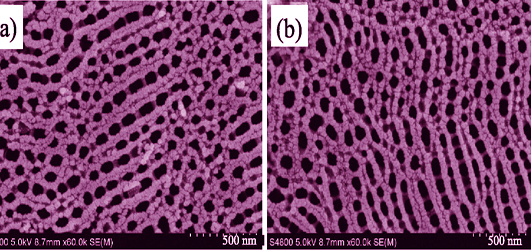
|
|
|
Attapulgite/g-C3N4 Composites: Synthesis and Electrocatalytic Oxygen Evolution Property
ZHANG Sheng, JIANG Yi, JI Yuan-Yuan, DU Ying, SHENG Zhen-Huan, YIN Jing-Zhou, LI Qiao-Qi, ZHANG Li-Li
2019 Vol. 34 (8): 803–810
 Abstract
Abstract(
837 )
 HTML
HTML(
21)
 PDF
PDF(1292KB)(
1165
)
A novel kind of electrocatalytic oxygen evolution catalyst was fabricated by introducing g-C3N4 ultrathin films onto the surface of attapulgite (ATP) via a simple in-situ depositing technique, combined with freeze-drying and programmed roasting process. The obtained product was identified as ATP/g-C3N4. In order to achieve the best catalyst, a series of ATP/g-C3N4 composites with different mass fraction of ATP were obtained and marked as ATP/g-C3N4-w, where w represents the mass fraction of ATP (w =mATP: (mATP + mg-C3N4)= 0.33, 0.40, 0.50, 0.67). Results show that g-C3N4 thin layers are uniformly loaded onto the ATP surface via the chemical bond (Si-O-C), which is beneficial to tailor the surface electronic structure of g-C3N4 and provide more active sites. Their electrocatalytic oxygen evolution properties in 0.1 mol/L KOH were investigated. It is found that ATP/g-C3N4-0.50 presents the best oxygen evolution catalytic performance and has excellent oxygen evolution stability. Its oxygen evolution over potential is 410 mV and the Tafel slope is 118 mV/dec at a current density of 10 mA/cm 2. The results suggest that ATP/ g-C3N4-0.50 can be used as a potential oxygen evolution catalyst.
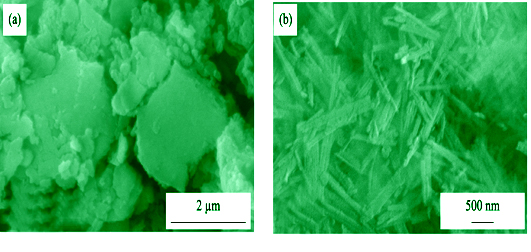
|
|
|
Effect of Fe on CoxAl3FeyOm±δ Catalysts for Hydrogen Production by Auto-thermal Reforming of Acetic Acid
WANG Qiao, ZHOU Qing, AN Shuang, YANG Hao, HUANG Li-Hong
2019 Vol. 34 (8): 811–816
 Abstract
Abstract(
672 )
 HTML
HTML(
7)
 PDF
PDF(653KB)(
877
)
Bio-oil obtained from biomass can be used as an important raw material for hydrogen production. In this work, acetic acid (HAc) from bio-oil was selected as the model compound to produce hydrogen via auto-thermal reforming (ATR). Fe-promoted Co-based hydrotalcite-like CoxAl3FeyOm±δ catalysts were prepared by co-precipitation method and characterized by XRD, N2 physisorption, H2-TPR and TG to study the relationship between the catalytic performance and structure within these catalysts. The characterization results show that hydrotalcite-like structure of (Co/Fe)xAl2CO3(OH)y·zH2O were obtained by co-precipitation, then transformed to alumina supported spinel structures, including CoAl2O4, Co3O4, Fe3O4, and FeAl2O4, after calcination. BJH analysis indicated that within these calcined CoxAl3FeyOm±δ catalysts, there were mesoporous structures, in which the Co0.45Al3Fe0.4O5.55±δ centered structure with pore size distribution 4 nm. As suggested by H2-TPR and XRD, the reducibility of Co metal was enhanced with the Fe promoter, and there were CoFe alloys formed after reduction. In the stability test, the hydrogen yield reached 2.72 mol-H2/mol-HAc and remained stable, meanwhile, the CoFe alloy was also stable and no carbon deposit was detected after reaction, indicating that there was high resistance to oxidation and coking within Fe-promoted CoxAl3FeyOm±δ catalysts.
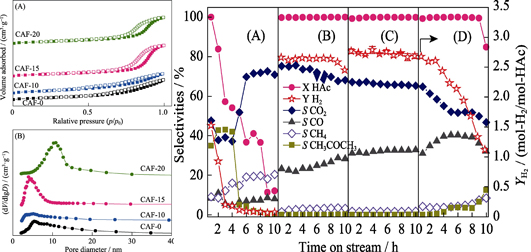
|
|
|
Boron Nitride Nanosheets Supported Cu2O Nanoparticles: Synthesis and Catalytic Reduction for 4-nitrophenol
ZHU Meng-Meng, LI Guo-Hua, ZHANG Xue-Ming, ZHAI Jia-Xin, GAN Si-Ping, SONG Xiao
2019 Vol. 34 (8): 817–826
 Abstract
Abstract(
831 )
 HTML
HTML(
26)
 PDF
PDF(5629KB)(
1360
)
Despite excellent catalytic capability, Cu2O nanomaterial exhibits weak stability which limits its application. In this study, a novel kind of Cu2O, Cu2O/BNNSs-OH, supported catalyst with highly catalytic efficiency and stability, was facilely fabricated via a controllable liquid phase reduction of ascorbic acid and combining with an annealing process. Cu2O/BNNSs-OH catalyst was synthesized by using boron nitride nanosheets (BNNSs), prepared by the “push-pull” effect of polyvinylpyrrolidone (PVP) and water phase change, as a supporter and spherical Cu2O nanoparticles (2-7 nm) prepared by forward titration (ascorbic acid→Cu 2+, solution with a pH 11) as active components. Morphology and structure of as-obtained samples were characterized by scanning electron microscopy (SEM), high resolution transmission electronic microscopy (HRTEM), atomic force microscopy (AFM), X-ray powder diffraction (XRD), X-ray photoelectron spectroscopy (XPS), Fourier transform infrared spectroscopy (FT-IR), and Raman spectroscopy. The results of the synthetic method showed that spherical Cu2O nanoparticles were uniformly dispersed on the carrier surface and BNNSs displayed some stabilization effect on Cu2O which could be prevented from being oxidized into CuO. Moreover, the catalytic activity was investigated by catalytic reduction reaction of 4-nitrophenol to 4-aminophenol. Cu2O/BNNSs-OH with high catalytic activity similar to the noble metal catalyst for the reduction of 4-nitrophenol is highly reusable for five successive cycles without significant degradation and activity loss.
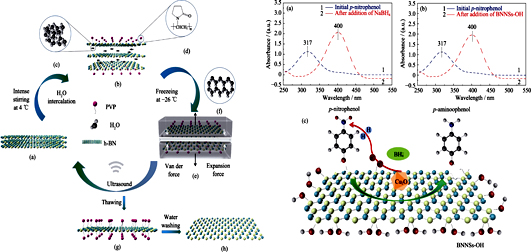
|
|
|
Pd/CeO2/γ-Al2O3 Catalyst with Low Loading for Catalytic Oxidation of VOCs
LI Si-Han, ZHANG Chao, WU Chen-Liang, ZHANG He-Feng, YAN Xin-Huan
2019 Vol. 34 (8): 827–833
 Abstract
Abstract(
691 )
 HTML
HTML(
17)
 PDF
PDF(3392KB)(
1154
)
The Pd/γ-Al2O3 and Pd/CeO2/γ-Al2O3 catalysts with 0.03wt% Pd loading were successfully synthesized via simple direct-adsorption method, and evaluated for the oxidation of volatile organic compounds (VOCs). The morphology, structure, and surface properties of the synthesized samples were characterized by X-ray diffraction (XRD), N2 adsorption-desorption (BET method), transmission electron microscopy (TEM), X-ray photoelectron spectroscopy (XPS), temperature-programmed reduction of H2 (H2-TPR). The temperatures for conversion of 98% toluene, acetone and ethyl acetate over the Pd/CeO2/γ-Al2O3 catalyst were 205, 220 and 275 ℃ under the conditions of VOCs volume fraction at 0.1% and gas hourly space velocity (GHSV) at 18000 mL/(g·h), respectively, which were 15, 15 and 20 ℃ lower than that of Pd/γ-Al2O3 catalyst. The Pd/CeO2/γ-Al2O3 exhibited outstanding catalytic activity, stability and selectivity even at high gas hourly space velocity. The results indicated the addition of ceria to alumina influenced the physico- chemical properties of the materials and their catalytic activities. It also revealed that Pd/CeO2/γ-Al2O3 possessed Ce 3+and high content of PdO, and the main active PdO species were well-dispersed on the surface of the γ-Al2O3 support. In addition, the strong metal-support interaction between PdO and non-stoichiometric cerium oxides enhanced catalytic performance of the Pd/CeO2/γ-Al2O3 for oxidation of VOCs.
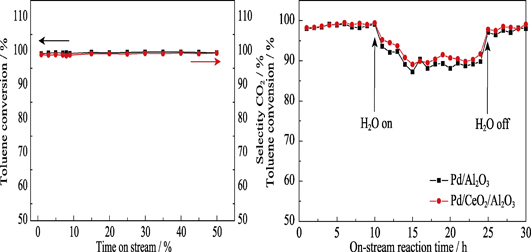
|
|
|
Controllable Synthesis and Growth Mechanism of Two-dimensional TiSe2 Nanosheets
JIAO Si-Yi, GE Wan-Yin, YIN Li-Xiong, XU Mei-Mei, CHANG Zhe, ZHANG Li
2019 Vol. 34 (8): 834–838
 Abstract
Abstract(
823 )
 HTML
HTML(
19)
 PDF
PDF(2537KB)(
950
)
Solution method is a mild, controllable and commonly used synthetic method. However, the reported solution methods for the preparation of TiSe2 nanosheets usually use trioctylphosphine (TOP) as solvent. TOP is poisonous and potentially harmful to the human body as well as the environment. In this paper, hexagonal TiSe2 nanosheets were synthesized by simple solution method without TOP. The shape evolution of TiSe2 nanosheets was investigated by adjusting the reaction time. The crystal phase, morphology, elements, and the optical property of TiSe2 nanosheets were characterized by X-ray diffraction (XRD), scanning electron microscopy (SEM), energy dispersive X-ray spectroscopy (EDS), and UV-Vis spectroscopy, respectively. The spiral growth steps can be clearly observed in SEM images. A spiral layer by layer growth mechanism was proposed based on the morphology evolution of TiSe2 nanosheets. The photocatalytic activity of TiSe2 nanosheets was evaluated by the degradation of RhB under sun light irradiation. Compared with the commercial P25, the as-prepared TiSe2 nanosheets exhibit a superior photocatalytic activity, which indicates that TiSe2 nanosheets are promising candidate as photocatalytic material for environmental protection.
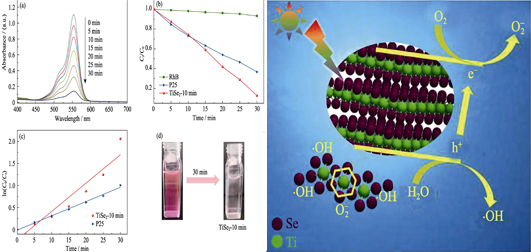
|
|
|
Triboelectric Nanogenerator Based on Graphene Forest Electrodes
HAN Jie-Min, WANG Mei, TONG Zhao-Min, MA Yi-Fei
2019 Vol. 34 (8): 839–843
 Abstract
Abstract(
1109 )
 HTML
HTML(
29)
 PDF
PDF(6848KB)(
1969
)
This study presents a triboelectric nanogenerator (TENG) with graphene forest as electrode. Graphene forest was fabricated by plasma enhanced chemical vapor deposition (PECVD) process, which shows great different morphology compared with other ‘wall-like’ vertically oriented graphene so far. Graphene forest films are composed of graphene nanoflakes, exhibiting not only low sheet resistance ((110±5) Ω/□) but also uniquely discrete ‘tree-like’ morphology, which are favorable to contact and friction with other materials. According to its morphology superiority, Kapton film and graphene forest film were utilized as electrodes for triboelectric nanogenerator, in which an open circuit voltage of 20 V and a short circuit current of 0.75 μA are obtained. Furthermore, the working principle of the graphene forest based triboelectric nanogenerator was discussed. At last, three LEDs of different color in demo circuit were lighted up by as-prepared nanogenerator, which proves the effective application of graphene forest in triboelectric nanogenerator.
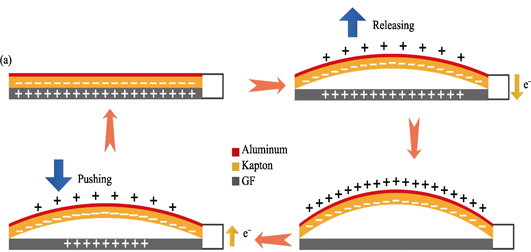
|
|
|
Preparation and Chemically Responsive Luminescent Switching of the Flexible Self-supporting TbW10-Agarose Green Emission Thin Films
WANG Bin, ZHENG Jin-Hui, WANG Xiao-Hong, ZHAO Bo, XU Liang, LIU Zong-Rui
2019 Vol. 34 (8): 844–850
 Abstract
Abstract(
576 )
 HTML
HTML(
19)
 PDF
PDF(4073KB)(
847
)
Flexible self-supporting TbW10-agarose composite thin films were prepared by combination of Sol-Gel and casting technique based on the functional complementarity between excellent green luminescence polyoxometalates TbW10 and good film-forming matrix agarose. Composition and structure of the films were characterized by FT-IR and Raman spectrum. Thir thickness, surface roughness and microstructure were studied by SEM, AFM and TEM, respectively. And effects of different TbW10 contents on the transmittance and luminescence properties were investigated. On this basis, the reversible chemically responsive luminescent switching performance of TbW10-Agarose green luminescent film was realized under stimulation of HCl and NH3. The response time and reversibility of chemically responsive luminescent switching performance were studied by fluorescence kinetics curves. And the fluorescence spectrum detection for HCl gas was extended based on the green luminescent thin film sensor with a detection limit of 0.2731 mmol·L -1.
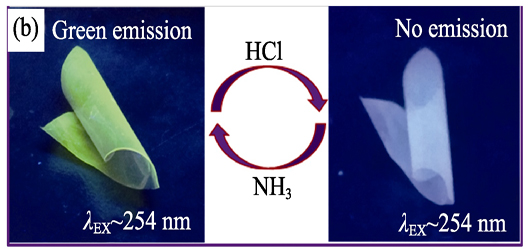
|
|
|
Optical Transmittance Model Construction for ZnO Transparent Ceramic and Experimental Verification
LIN De-Bao, FAN Ling-Cong, DING Mao-Mao, XIE Jian-Jun, LEI Fang, SHI Ying
2019 Vol. 34 (8): 851–856
 Abstract
Abstract(
572 )
 HTML
HTML(
11)
 PDF
PDF(1003KB)(
803
)
The influence of birefringent light scattering on in-line optical transmittance model depended on uniaxial hexagonal crystal structure transparent ceramics using ZnO as research object has been established based on Mie theory and its developed approximation Rayleigh-Gans-Debye scatting theory. Theoretical calculation indicates that in-line optical transmittance of ZnO transparent ceramics improves obviously with the decrease of grain size and increase of orientation. ZnO transparent ceramics which meet the microstructure requirements of the model were effectively controlled by slip casting process under a strong magnetic field and designing SPS sintering parameters. Corresponding results show that the in-line optical transmittance of non-textured ZnO transparent ceramic increased from 5.1% to 12.9% at 600 nm as grain size decreased from 1.72 μm to 0.35 μm while that of textured ZnO transparent ceramic (mean grain size 0.66 μm) was improved greatly from 21.6% to 36.6% at 600 nm due to increasing orientation factor to 24.7% calculated from XRD data. Based on these data, it is found that the calculation results of theoretical model match well with the experiment results.
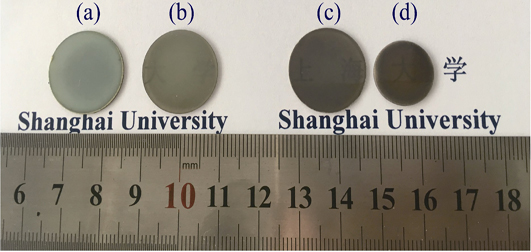
|
|
|
Property of YBCO Films Doping with Positive and Negative Lattice Mismatch Nanoparticles
WANG Ya, SUO Hong-Li, LIU Min, WANG Tian-Tian, KAUSAR Shaheen, XU Yan, MA Lin
2019 Vol. 34 (8): 857–861
 Abstract
Abstract(
511 )
 HTML
HTML(
3)
 PDF
PDF(822KB)(
645
)
The YBCO composite films doped with Ba2YTaO6 (BYTO) single nanoparticles and BYTO/LaAlO3 (LAO) double nanoparticles were prepared by low-fluorine MOD process. The result showed that the optimum doping amount of BYTO in YBCO film was 6mol%, when the self-field Jc of this film was 1.25 MA/cm 2, and the maximum pinning force was 3.02 GN/m 3 at 1.2 T. In the co-doping experiment, BYTO particles with positive lattice mismatch with YBCO and LAO particles with negative lattice mismatch with YBCO were introduced, and the interaction between two particles increased effective doping amount up to 10mol%. With adjustment of the ratio of the two kinds of nanoparticles, it was found that the 6mol% BYTO+4mol% LAO-doped YBCO composite films had a Jc value as high as 0.27 MA/cm 2 when the magnetic field was 2 T. This magnetic field in which the maximum pinning force was obtained, increased from 0.42 T for pure YBCO to 1.6 T for codoping, in which the maximum pinning force was 5.6 GN/m 3. The co-doping with positive and negative lattice mismatch nanoparticle effectively improves the superconductivity of YBCO composite film under applied magnetic field.
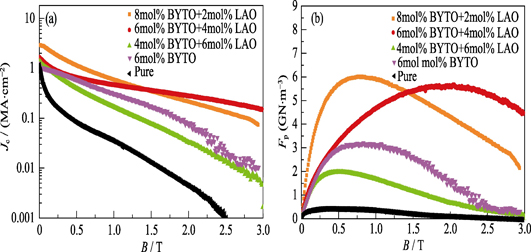
|
|
|
Low-temperature Deposition of α-Al2O3 Films by Reactive Sputtering Al+α-Al2O3 Target
CHENG Yi-Tian, QIU Wan-Qi, ZHOU Ke-Song, LIU Zhong-Wu, JIAO Dong-Ling, ZHONG Xi-Chun, ZHANG Hui
2019 Vol. 34 (8): 862–866
 Abstract
Abstract(
617 )
 HTML
HTML(
5)
 PDF
PDF(1196KB)(
1044
)
Low-temperature deposition of α-Al2O3 film is the key to expand its industrial applications. Al, α-Al2O3 and Al + 15wt% α-Al2O3 targets were used to deposit alumina films on Si(100). The as-deposited films by radio frequency magnetron sputtering (RFMS) were analyzed by grazing incidence X-ray diffraction (GIXRD), transmission electron microscopy (TEM), energy dispersive X-ray spectroscopy (EDS), and the nano-hardness was measured by depth-sensing indentation method. The results show that the single phase α-Al2O3 films were successfully deposited by reactive sputtering the Al+α-Al2O3 composite target at 550 ℃. When deposited at the substrate temperature of 550 ℃, the α-Al2O3 sputtered from the target preferentially form α-Al2O3 nucleus which could suppress the formation of γ phase, and promote the homoepitaxial growth of the α-Al2O3 to obtain the single phase α-Al2O3 films.
|
|
|
Material Removal Mechanism of Monocrystalline Germanium Based on Nano-scratch Experiment
GENG Rui-Wen, YANG Xiao-Jing, XIE Qi-Ming, LI Rui, LUO Liang
2019 Vol. 34 (8): 867–872
 Abstract
Abstract(
675 )
 HTML
HTML(
4)
 PDF
PDF(5470KB)(
760
)
A varied and constant load nano-scratch experiment on monocrystalline germanium was performed by Cube indenter. The surface morphology of the groove was observed by scanning electron microscope (SEM) and atomic force microscope (AFM) , and the scratch process was divided into three regimes, that is ductile regime, ductile-brittle transition regime and brittle regime based on observations. The material removal mechanism of different regimes was also analyzed. The least square method was used to establish nonlinear curve fittings between scratch depth and scratch force, and the correlation coefficient was used to verify reliability of fitting functions. Result shows that there is a strong correlation between scratch depth and scratch force. Meanwhile, the tendency of elastic recovery rate with scratch distance was analyzed. As the result shows, the elastic recovery rate gradually decreases from 1 in the pure elastic stage to about 0.76 in stable stage. Based on ductile-brittle translation critical load, a model is proposed to calculate the critical depth where the elastic recovery rate is firstly considered, and the ductile-brittle translation critical depth for monocrystalline germanium is 489 nm.
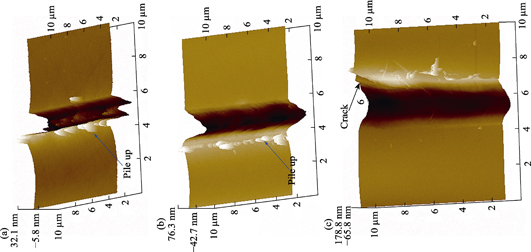
|
|
|
Oxidation Characteristics of Magnesium Diboride
GUO Yang, ZHANG Wei, ZHOU Xing, DENG Lei
2019 Vol. 34 (8): 873–878
 Abstract
Abstract(
967 )
 HTML
HTML(
16)
 PDF
PDF(2230KB)(
950
)
The oxidation characteristics and energy releasing characteristics of MgB2 were studied using oxygen bomb calorimeter, thermal analyzer and tube furnace. Results show that the combustion heat and combustion efficiencies of MgB2 are all higher than those of amorphous boron. In the temperature range explored (298-1673 K), four successive phases are observed in the oxidation process of MgB2 under slow heating rate. The primary oxidation stage of MgB2 occurrs between 1200 K and 1665 K. However, the primary oxidation stage of amorphous boron occurrs nearly 1919 K. At 1665 K, the oxidation percentage of MgB2 is 94.3%, compared to 43.6% of amorphous boron. Compared with amorphous boron, the fact that complete oxidation of MgB2 can be achieved at lower temperature indicates its superiority.
|
|
|
First Principles Study on the Property of O Vacancy in LuPO4 Crystal
LI Jin, LIU Ting-Yu, YAO Shu-An, FU Ming-Xue, LU Xiao-Xiao
2019 Vol. 34 (8): 879–884
 Abstract
Abstract(
707 )
 HTML
HTML(
8)
 PDF
PDF(3701KB)(
876
)
Phosphoric acid crystal doped with bivalent cation is easy to form pyrophosphate structure (P2O7) 4-. This kind of oxide material containing pyrophosphate structure is very suitable for proton conductor, fuel cell, gas sensor, and ceramic film, etc. In this research we applied first principles to study the structural behaviour of oxygen vacancy in LuPO4 crystal. The results showed that oxygen vacancies with two positive charges distort structure largely and form pyrophosphate structure. In order to verify the feasibility of this structure transition, the nudged elastic band method is used to find the highest saddle point of potential energy. The calculated results show that transition state energies of oxygen vacancy with +1 and +2 charge forming pyrophosphate structure are about 2.4 and 0 eV, respectively. So pyrophosphate structure easily forms for oxygen vacancy with +2 charge. Finally, the lattice structure, density of states and charge density distribution are obtained. P atom and O atom around the oxygen vacancy with +2 charge can form chemical bond. The electron on the P s will shift to O p orbit for oxygen with strong electronegative, which introduces the defect level in forbidden band. It is indicated that the property of the crystal changes drastically for the existence of the oxygen vacancy with two positive charges.
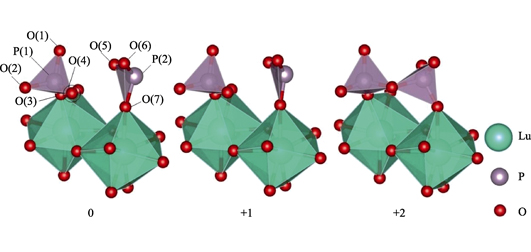
|
|
|
Structure Modeling of Genes in Glass: Composition-structure-property Approach
ZHANG Li-Yan, LI Hong, HU Li-Li, WANG Ya-Jie
2019 Vol. 34 (8): 885–892
 Abstract
Abstract(
533 )
 HTML
HTML(
3)
 PDF
PDF(2344KB)(
689
)
A statistical modeling approach to modeling glass composition (C) - structure (S) - property (P) is introduced based on glass property response to the glass network structure. This paper first reviewed some of the limitations of the C-P statistical modeling approach, then followed by complementary benefit identified from using S-P statistical modeling approach. Furthermore, S-P modeling is not limited by a narrower composition space as seen in the C-P modeling case, which benefits glass composition fine-tuning and design optimization, such as in the chemical stability experiment for Nd: phosphate laser glass, the S-P models perform much better than the C-P models. The procedure of C-S-P modeling was illustrated, and how to use C-S and S-P models inverse the composition of glass was also detailed. Except for the regular properties, C-S-P modeling methodology can provide more accurate predictions on laser glass emission properties, chemical durability, etc., which are often difficult by using the C-P modeling approach alone. Our effort on C-S-P modeling is to explore a general methodology that can provide researchers with an alternative method to facilitate glass design with higher efficiency, fast turn-around, and high accuracy and precision.
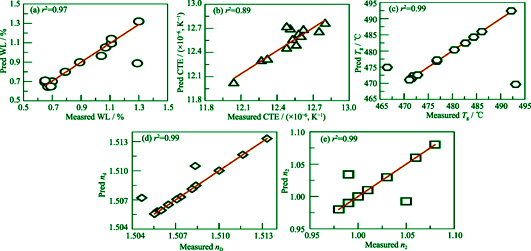
|
|
|
Core/Shell Quantum Dots and Au Nanoparticles Assembly for Effective Detection of Nerve Agent Mimic
LI Sheng-Song, ZHENG Yong-Chao, MENG Shu-Lin, WU Li-Zhu, ZHONG Jin- Yi, ZHAO Chong-Lin
2019 Vol. 34 (8): 893–898
 Abstract
Abstract(
678 )
 HTML
HTML(
6)
 PDF
PDF(1394KB)(
814
)
A novel assembly of CdSe/12ZnS core/shell quantum dots (CdSe/12ZnS QDs) and gold nanoparticles (Au NPs) was constructed for highly sensitive detection of nerve agent mimic diethyl cyanophosphonate (DCNP). Due to fluorescence resonance energy transfer (FRET) from CdSe/12ZnS QDs to Au NPs, the emission intensity of QDs was quenched. Thiocholine generated in situ from acetylcholinesterase (AChE) and acetylthiocholine (ATC) would destroy the assembly structure to recover the emission of QDs. However, diethyl cyanophosphonate (DCNP) could inhibit the activity of AChE, thus leading to the suppressed fluorescence recovery. Therefore, the detection of DCNP was achieved by evaluating fluorescence recovery efficiency of QDs. Optimally, a linear relationship between fluorescence recovery efficiency of QDs and logarithmic concentration of DCNP was observed in a range of 5.0×10 -9 mol/L to 5.0×10 -4 mol/L. As a result, the limit of detection (LOD) was deternimed to be as low as 5.0×10 -9 mol/L.
|
|
|
Synthesis of Zn, Mn doped Fe3O4 Nanoparticles with Tunable Size
CHENG Tian-Sheng, PAN Jiong, XU Ying-Ying, BAO Qun-Qun, HU Ping, SHI Jian-Lin
2019 Vol. 34 (8): 899–903
 Abstract
Abstract(
660 )
 HTML
HTML(
18)
 PDF
PDF(1602KB)(
875
)
Zn, Mn doped Fe3O4 magnetic nanoparticles have broad application prospects in biomedicine for their excellent magnetic properties. Therein, the most remarkable property of magnetic nanoparticles is size-dependent biomagnetic applications, and size variation also affect their magnetic characteristics. Therefore, based on the specific requirements of size for various biological applications, it is critical to regulate their size. In this study, we synthesized 5-20 nm Zn, Mn doped Fe3O4 magnetic nanoparticles by changing reflux time duration, varying metal precursor and adding oil phase reducing agent (1,2-hexadecanediol). It is found that addition of 1,2-hexadecanediol is beneficial to the formation of smaller nanoparticles, while metal chloride and longer reflux time are helpful to prepare larger particles. Additionally, there exists a positive correlation between particle size and saturation magnetization.
|
|
|
Oxidation Behavior of SiCf/SiC Composites Modified by Layered-Y2Si2O7 in Wet Oxygen Environment
WANG Peng, WANG Qing-Lei, ZHANG Xiang-Yu, YANG Jin-Shan, ZHOU Hai-Jun, HU Jian-Bao, DING Yu-Sheng, DONG Shao-Ming
2019 Vol. 34 (8): 904–908
 Abstract
Abstract(
770 )
 HTML
HTML(
13)
 PDF
PDF(2107KB)(
965
)
SiCf/SiC composites modified by layered Y2Si2O7 were presented in this research. Layered Y2Si2O7 was transformed from yttrium oxide by chemical vapor infiltration process in SiC fiber preform, in which yttrium oxide was generated by the solution impregnation and pyrolysis method. Oxidation behavior of the layered-Y2Si2O7 modified SiCf/SiC composites was studied in the wet oxygen environment at 1400 ℃, showing that Y2Si2O7 can concentrate on the oxidation surface to form a protective layer during the oxidation process. The bending strengths of SiCf/SiC composites with one layer or three layers of Y2Si2O7 remain 60.38% and 71.93%, respectively, after the oxidation for 80 h. In contrast, it is only 50.11% for SiCf/SiC composites without Y2Si2O7. Therefore, layered distribution of Y2Si2O7 significantly improves the oxidation resistance of SiCf/SiC composites in wet oxygen environment.
|
|